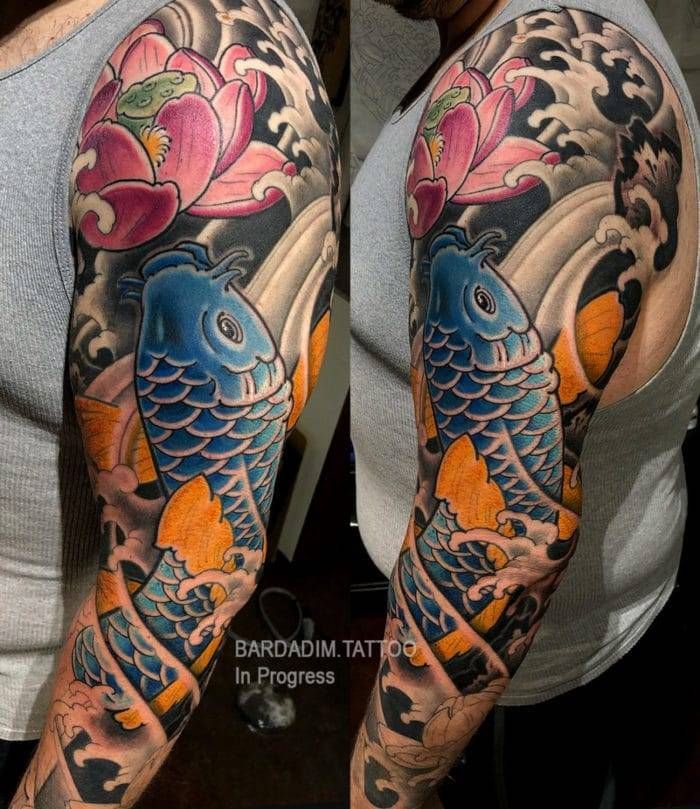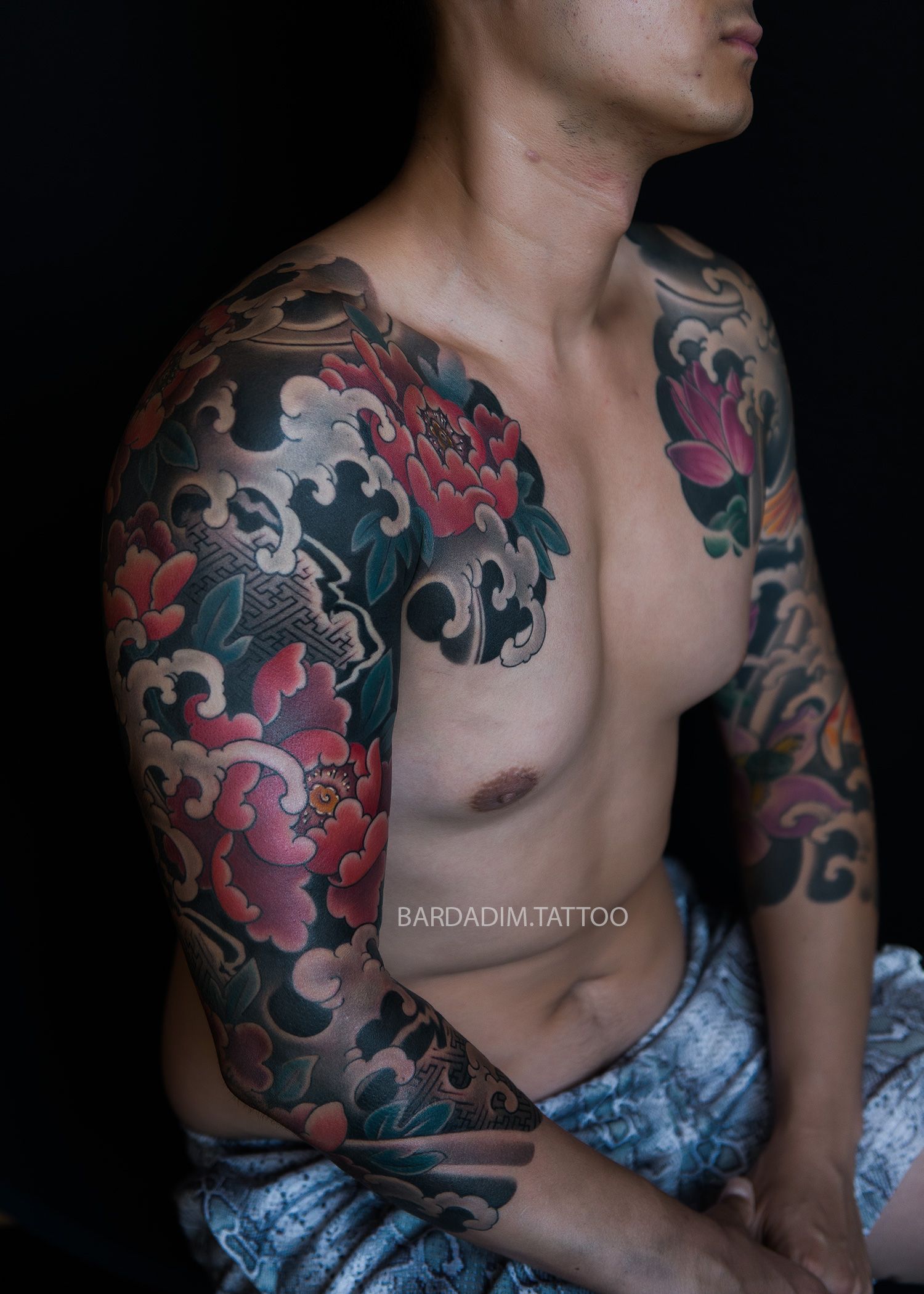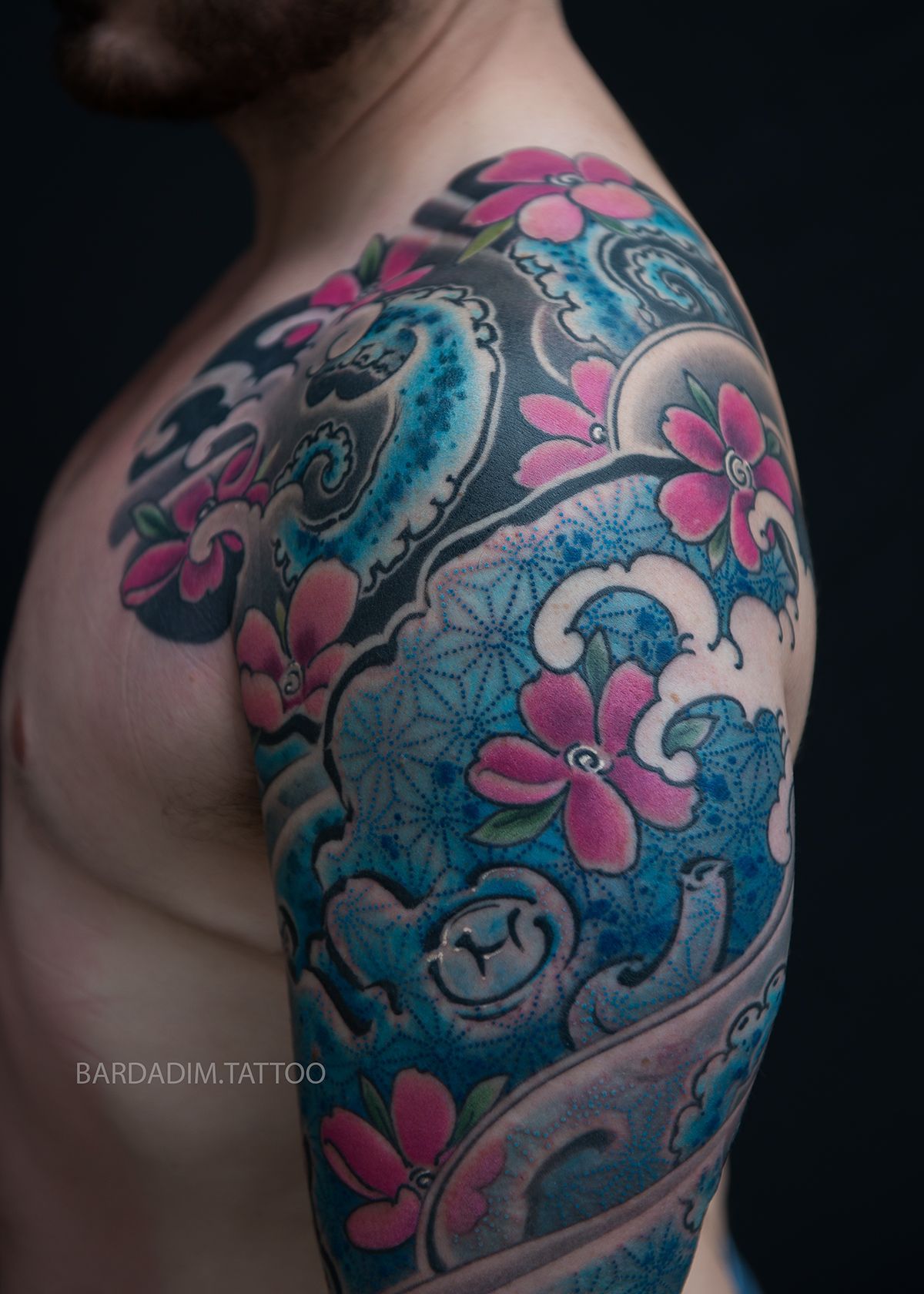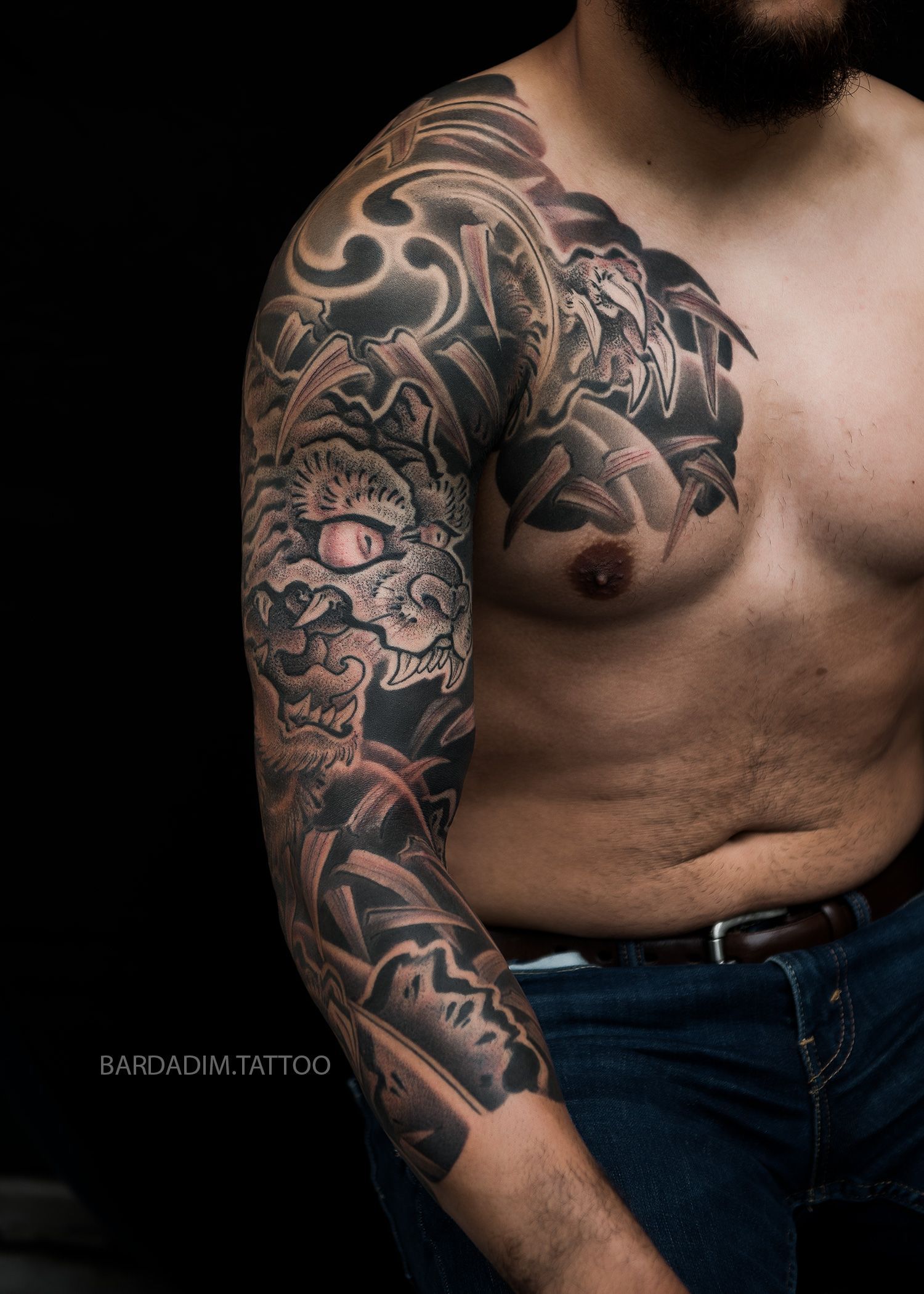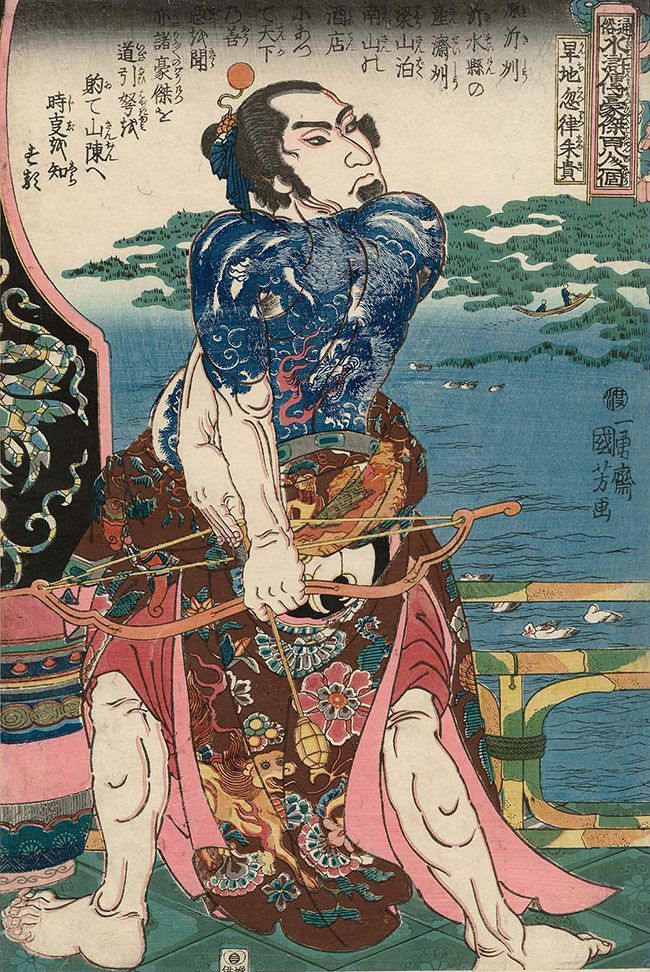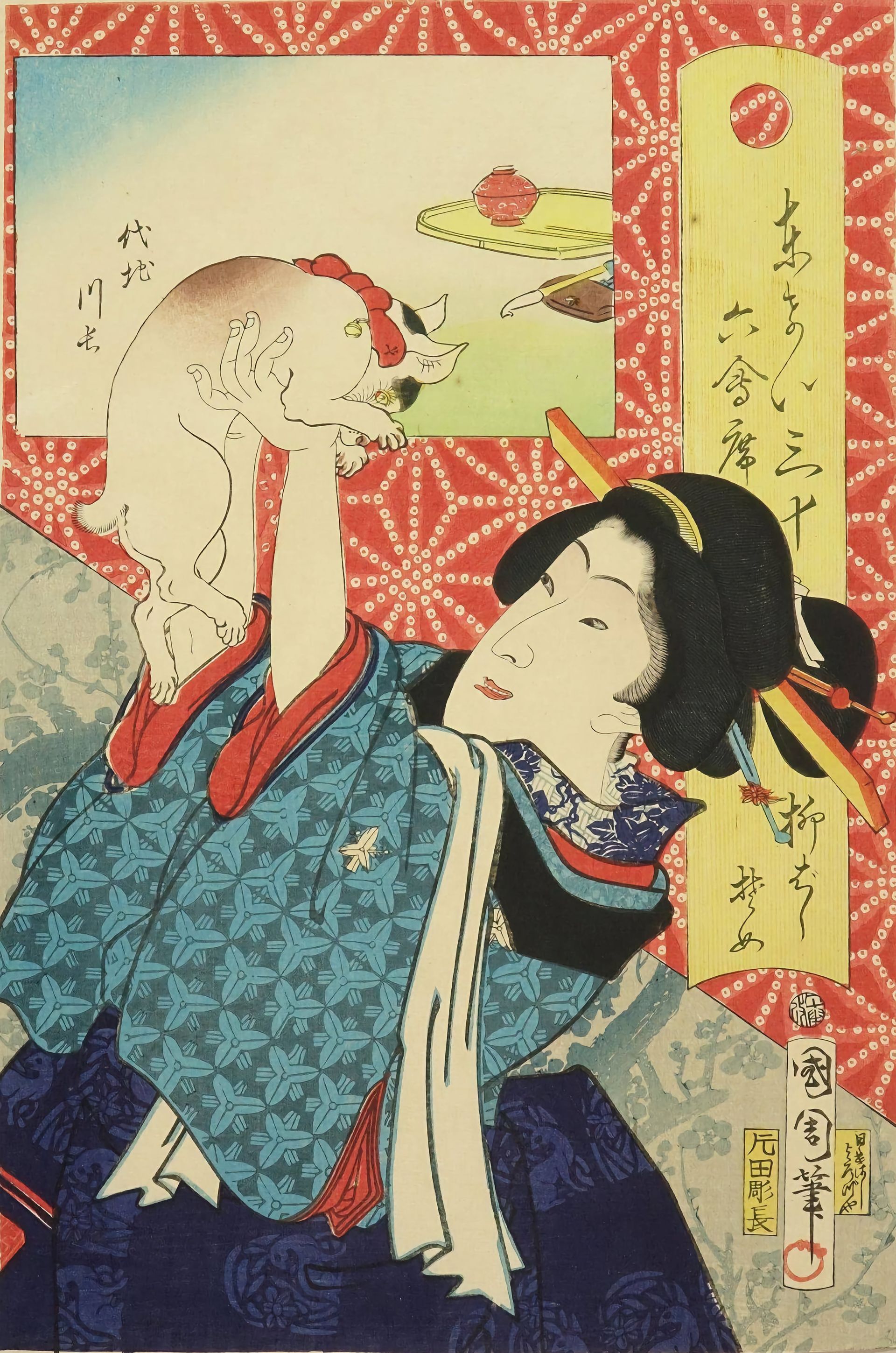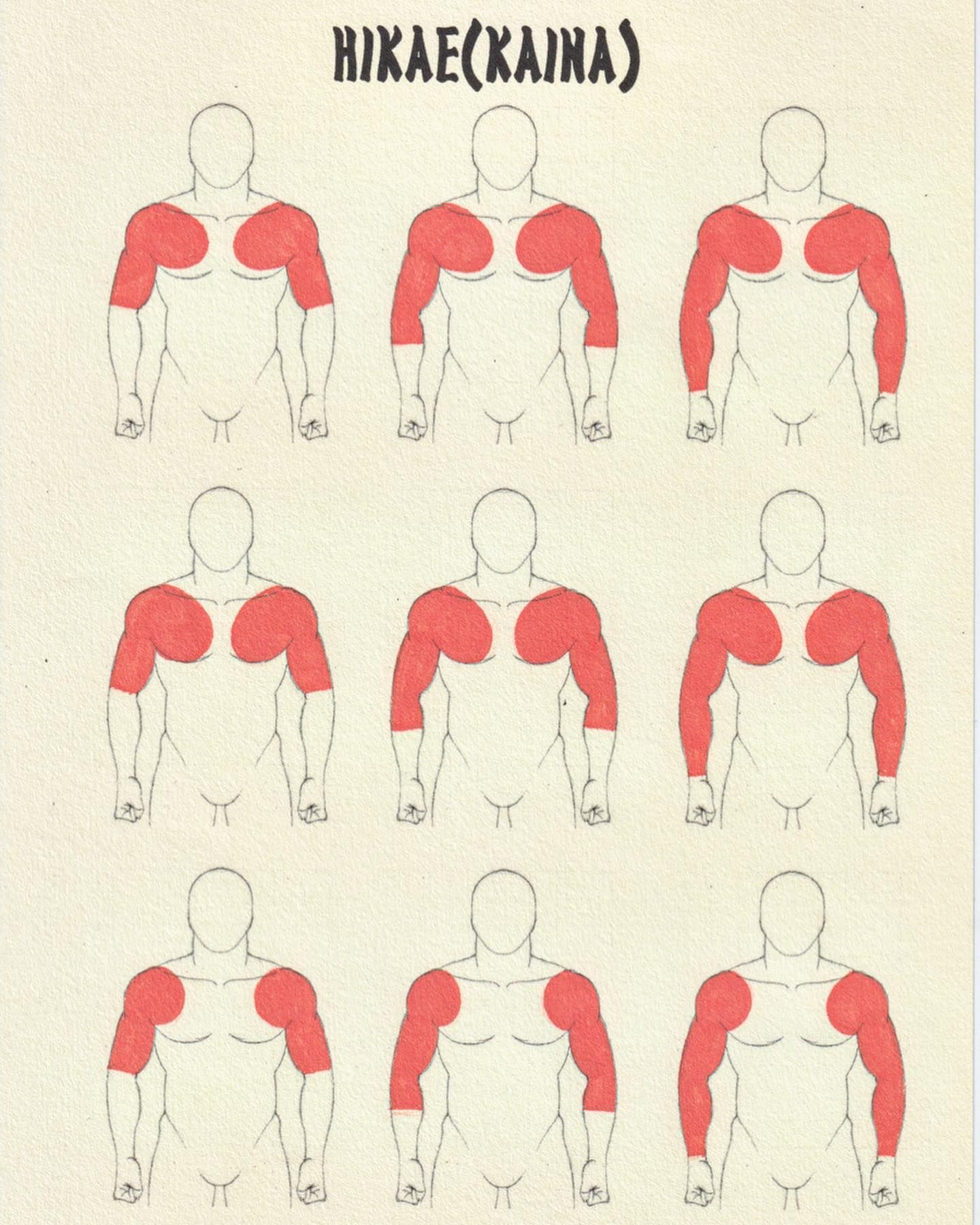Koi and Lotus Tattoo
Koi and Lotus Tattoo In progress. Blue Koi Fish climbing up the waterfall, surrounded by Lotus Flowers. Cant wait to share the final work!
Schedule an Appointment
If you’d like to have this kind of tattoo in your life, and like George’s style of tattooing, please feel free to contact him and then you will discuss your custom tattoo. But before that:
1. Please check up portfolio ones more, just to be sure that George’s style of work is compatible to your tattoo idea, he wouldn’t be able to help if it’s not.
2. Collect reference pictures to clearly illustrate your tattoo idea in the best way. Please note : George works by custom only. Photos of someone else’s tattoos can only be used as an example of desired tattoo style. Absolutely NO copying of other peoples tattoos or parts of that tattoos! More tips about custom tattooing can be found here.
3. George only takes consultation bookings via e-mail, please send detailed conceptual description of your tattoo idea, including approximate expecting size, body part, left or right side etc. Please attach all images you have collected. The more useful information you can provide, the quicker your actual consultation can be scheduled.
George works only in styles represented in his portfolio and absolutely serious about results of his work, that’s why He’s always really selective on what to do on skin. For instance, He never makes letterings , sorry about that. Please, set up your consultation appointment only if you strongly believe that George can do what exactly you want.
Koi and Lotus Tattoo – George Bardadim – Tattoo Artist based in Brooklyn, NY


